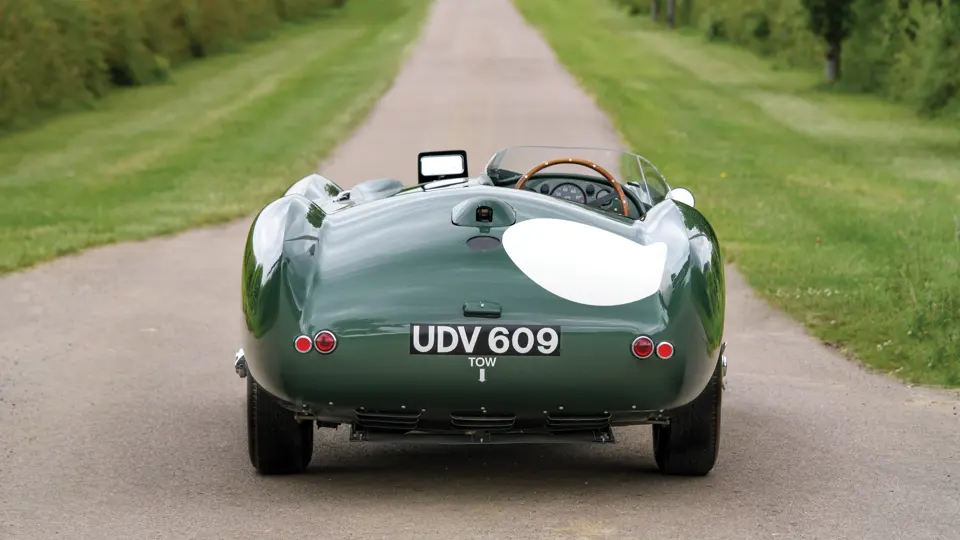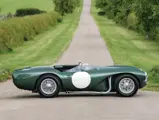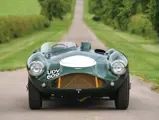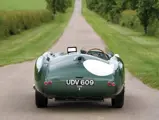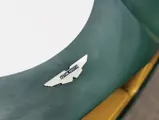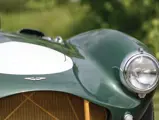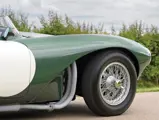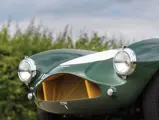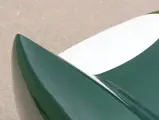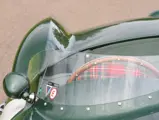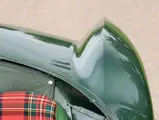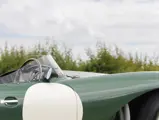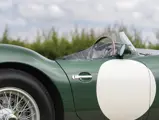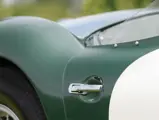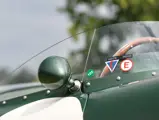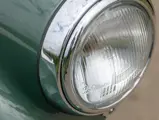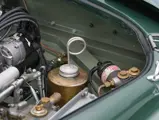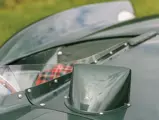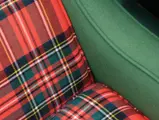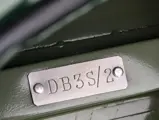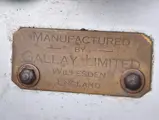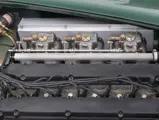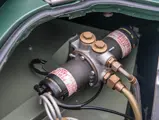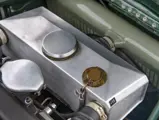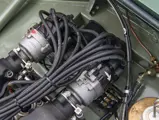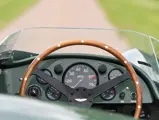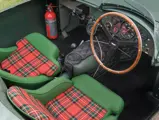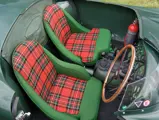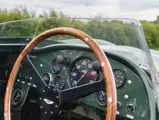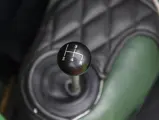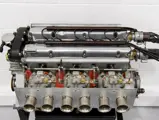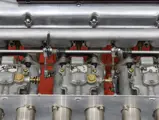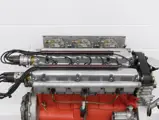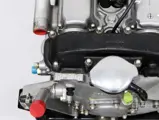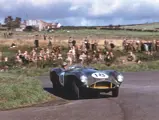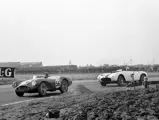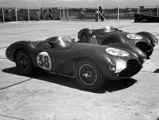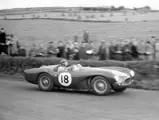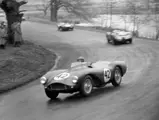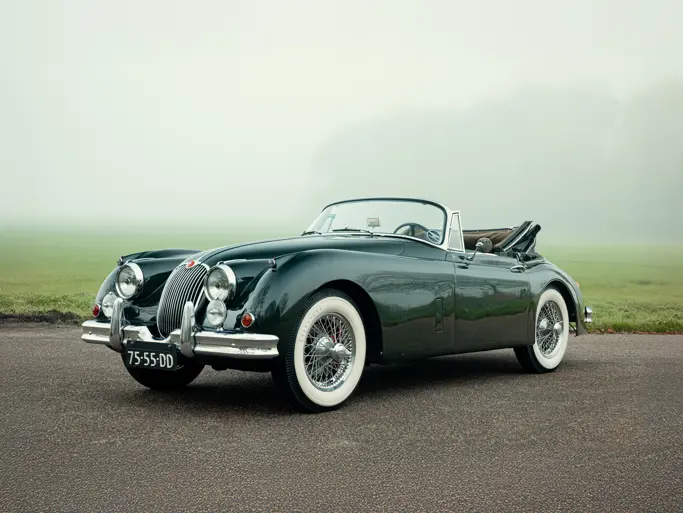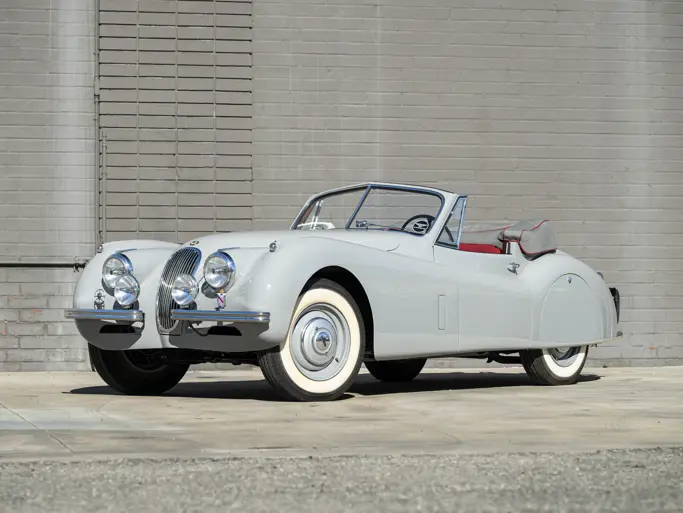
1953 Aston Martin DB3S Works
{{lr.item.text}}
$8,750,000 - $10,500,000 USD | Not Sold
{{bidding.lot.reserveStatusFormatted}}
- The second of 10 surviving Works cars; the Goodwood 9-Hour winner
- Period competition at Le Mans, Sebring, Buenos Aires, Spa, and Mille Miglia
- Driven by Peter Collins, Reg Parnell, Roy Salvadori, and Eric Thompson
- Later owned and raced by Peter Collins
- One of the finest Works DB3Ss extant and highly original
- An important piece of Aston Martin’s competition history
- Eligible for the finest events around the world
- Significant history file with many original and unique items
- Offered with a spare race-prepared engine
The mid-fifties were the golden era of sports car racing, when the finest drivers competed in the fastest cars on challenging circuits and the most perilous road races, such as the Mille Miglia and RAC Tourist Trophy at Dundrod. Despite being the quickest automobiles of the day, these racing cars also made for wonderful road cars. Undoubtedly, one of the finest and most competitive cars to emerge from this era was the Aston Martin DB3S.
The DB3S was the perfection of the ideas of two of the greatest engineers of the 20th century, W.O. Bentley and Professor Robert Eberan von Eberhorst of Auto Union fame. Radically developing Eberhorst’s DB3 tubular chassis, Willie Watson turned the DB3 (which by 1953 was lagging behind Jaguar’s C-Type) into a far lighter and nimbler car that was more suited to being powered by the high-compression 3.0-liter version of W.O.’s straight-six. Legendary British designer Frank Feeley penned the gorgeous lines for the bodywork, creating one of the best-looking shapes ever to grace a race circuit. Feeley’s work on the DB3S produced iconic styling that can still be seen in the Aston Martins of today.
The second DB3S built by the factory, DB3S/2, was the first of three cars prepared by John Wyer’s competition department for the 1953 24 Hours of Le Mans. Despite the development efforts of Aston Martin’s engineers, Reg Parnell crashed DB3S/2 before Peter Collins could take over driving duties. A month later Collins finally got his turn in the driver’s seat at Silverstone for the British Grand Prix, where he finished 3rd in an all–Aston Martin podium.
Parnell’s opportunity to atone for his performance at Le Mans came at the Goodwood 9 Hours, when he was partnered with Aston Martin stalwart Eric Thompson. Wyer planned for DB3S/2 to be the hare of the three Astons and so fitted a shorter final drive in an effort to break the Works and Ecurie Ecosse C-Type Jaguars. As ever, Goodwood proved to be an extraordinarily tough circuit, with tires typically lasting only 55 miles. However, Wyer’s plan worked, and DB3S/2 scored a resounding victory a full two laps ahead of the nearest C-Type in 3rd.
DB3S/2’s final outing in 1953 was for the last round of the World Sportscar Championship, the RAC Tourist Trophy at Dundrod. The infamous road circuit was the perfect stomping ground for the DB3S. Being narrow and undulating, the circuit favored well-handling cars matched with brave drivers. The same pairing of Parnell and Thompson took the helm of DB3S/2, and despite a slipping clutch, they finished a fine 2nd behind the sister car, but still three laps ahead of any C-Type. This result secured 2nd in the unofficial drivers’ title for Reg Parnell, ahead of Fangio, Moss, and Walker.
Enthused by the victories of the previous year, David Brown elected to compete in every race in the 1954 World Sportscar Championship, starting with the 1000 KM of Buenos Aires. Parnell was partnered with Roy Salvadori in DB3S/2 for the Argentine race, but the pair were out at over half distance with distributor failure. Parnell and Salvadori shared driving duties again at the 12 Hours of Sebring, but after 24 laps, a hard-charging Parnell came to an abrupt halt with a broken conrod. In the heat of the moment, Parnell pushed DB3S/2 back to the pits, but his race was run. However, his efforts were awarded with the “Man of the Race” trophy.
DB3S/2’s next outing was the Mille Miglia. Parnell was given the job of driving the car for the entire distance, taking the famous photographer Louis Klemantaski as his co-driver. Wyer planned to avoid stops to change tires, opting to use a hard compound Avon. However, the weather during the race was wet and the tire choice disastrous, with both DB3Ss crashing out and suffering significant damage. Parnell’s luck ran out at L’Aquila when he ran across debris on the road from a previous accident, lost control, and ended his Mille Miglia in DB3S/2.
By the later part of the 1954 season, the Aston Martin team had been reduced to a collection of damaged DB3Ss. To remedy this, Wyer commissioned DB3S/1 and /2 to be rebuilt with new chassis and bodies. This treatment of the Works DB3Ss would become common practice; of the ten Works cars, one was scrapped and four received new chassis and bodies. Since leaving the factory, three of the Works cars have been severely damaged; as such, only two remain truly original from when they were first built. The body would be one of Frank Feeley’s greatest designs with arguably the prettiest nose of the various DB3S shapes combined with the voluptuous high tail of the coupes, a rear that does not look dissimilar to the later Ferrari 250 Testa Rossa.
The updated DB3S/2 would be ready in time for the RAC Tourist Trophy at Dundrod with Peter Collins starting and Pat Griffith in his final race. Collins made a fantastic start and was 4th behind Hawthorn in the Works 750 Monza, and Ascari and Fangio in the Works Lancia D24s, before the differential gave out. Collins once again showed his talent at Aintree in a fierce battle with Masten Gregory piloting a 4.5-liter Ferrari 375 MM. The brutish Ferrari overpowered DB3S/2 to win by two seconds, but Collins was 22 seconds ahead of Parnell in DB3S/1 and a large field of outstanding drivers. Collins had given his all in the race, as proven by the 6,700 rpm over-rev reading.
With the disastrous 1954 season behind them, Aston Martin built three new cars. DB3S/2 was sold to Peter Collins at a greatly reduced price on the basis that it could be called back to Works duty when required. Collins registered the car as UDV 609, which it still wears to this day. Collins’s season with DB3S/2 was largely British sports car races, always against strong opposition and often collecting overall or class podiums. His first Works outing with DB3S/2 was in 1955 at the Silverstone International Trophy, where he suffered a loose differential but still finished a respectable 7th (3rd in Class) behind the latest Works DB3Ss and a brace of Works and Ecurie Ecosse D-Types. DB3S/2’s final Works outing was one to forget, as David Brown sent Collins and Salvadori (DB3S/1) over to Kristianstad for the Swedish GP round of the World Sportscar Championship; Collins’s challenge ended in practice with conrod failure.
Collins’s last outing in his DB3S was the Daily Herald Trophy race at Oulton Park. It was a magnificent end to his time with DB3S/2. The grid was made up with Works entries from Aston Martin and Ferrari, with Tony Parravano sending over Carroll Shelby in the 121 LM. Whilst Mike Hawthorn in the Works 750 Monza tried in vain to catch Parnell in DB3S/8, Collins charged Hawthorn down towards the end to finish in close 3rd, the remainder of the field a minute or more behind. It was a great drive against factory opposition in what was now an outdated machine.
Collins’s outstanding performances in DB3Ss led to him being signed by Ferrari, which precipitated the sale of DB3S/2 to Tom Kyffin. He raced DB3S/2 enthusiastically throughout 1956, gaining wins at Goodwood and Silverstone, but would retire from the 1000 KM of Paris at Montlhéry (sharing with Ken Wharton). Following Kyffin, John Dalton took ownership of DB3S/2 for 1957, scoring several wins in minor races before it passed into the hands of Roy Bloxam. DB3S/2 was used sparingly by Bloxam in 1958 before putting it up for sale with the Chequered Flag garage.
Shortly after being advertised, it was in George Gale’s ownership, who gave it a full windscreen, a passenger door, and a cigar lighter for more practical road use. DB3S/2 was extremely fortunate to be in the hands of an owner who clearly loved it at a time when so many other sports cars suffered quite badly. Gale kept his DB3S for over two decades, only parting with it after eight years of persistent approaches by Richard Forshaw of Aston Martin Service Dorset. Forshaw owned more DB3Ss than anyone else and set about restoring DB3S/2 to the Works specification that Peter Collins bought in 1955. Underneath the road-car trim was an extremely original DB3S, with its matching-numbers engine from when it was sold to Collins and an entirely original body, save for the passenger door and metal tonneau lip.
Forshaw kept DB3S/2 until 1998, when it entered the collection of Peter Read, who raced it at the Monterey Historics and displayed it at the 1999 Louis Vuitton Concours. Read sold DB3S/2 to noted collector John McCaw in 2004, and the car was awarded 3rd in Post-War Sports Racing at the 2005 Pebble Beach Concours d’Elegance. DB3S/2 entered a third successive world-renowned collection in 2015 and has been beautifully maintained ever since, with outings at Goodwood Revival and other events. It remains in fantastic cosmetic and mechanical condition today and is fitted with a spare race engine by RS Williams with the original DP101/37 engine prepared and preserved on a stand. It should also be noted that DB3S/2 is accompanied by an extraordinary history file with many period documents, including original Aston Martin internal race debriefing reports by John Wyer, period articles and photographs, race programs, and maintenance invoices and reports going back to Richard Forshaw’s restoration.
Chris Nixon wrote about DB3S/2 in his definitive book The Aston Martin DB3S Sportscar that “it is now in magnificent condition, and Frank Feeley’s high rear-wing line makes it, and 3S/1, very handsome indeed.” The statement holds true over two decades later, and DB3S/2 represents an extraordinary example of one of the few post-war racing cars that can be truly enjoyed on the road and at events such as Mille Miglia, Goodwood Revival, and international concours.
Very few race cars of the era can claim to have their original chassis, engine, and body from when they left the factory; DB3S/2 is one of them. And fewer cars yet are so inextricably linked to a hero of motor racing; Peter Collins was a phenomenal talent, and DB3S/2 represents an extraordinary opportunity to own and drive a part of his story.

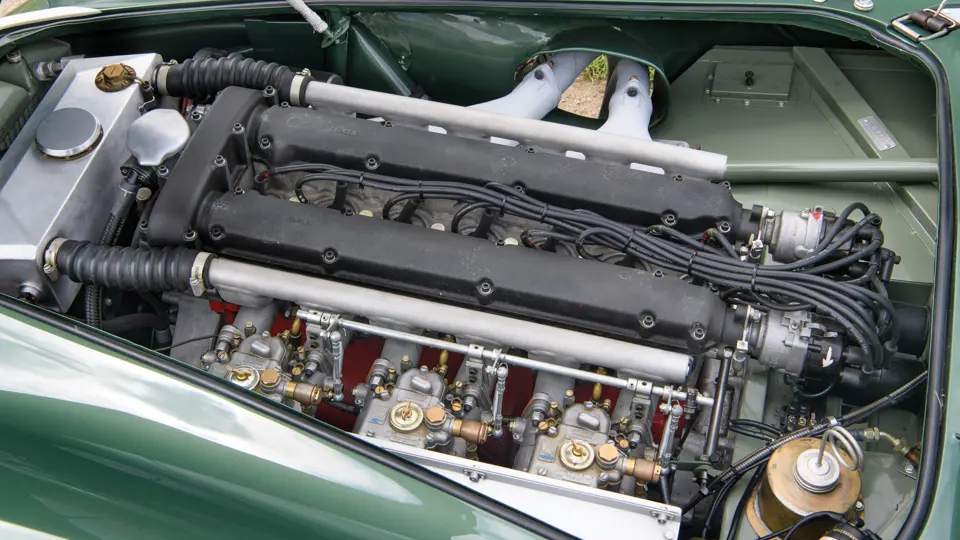


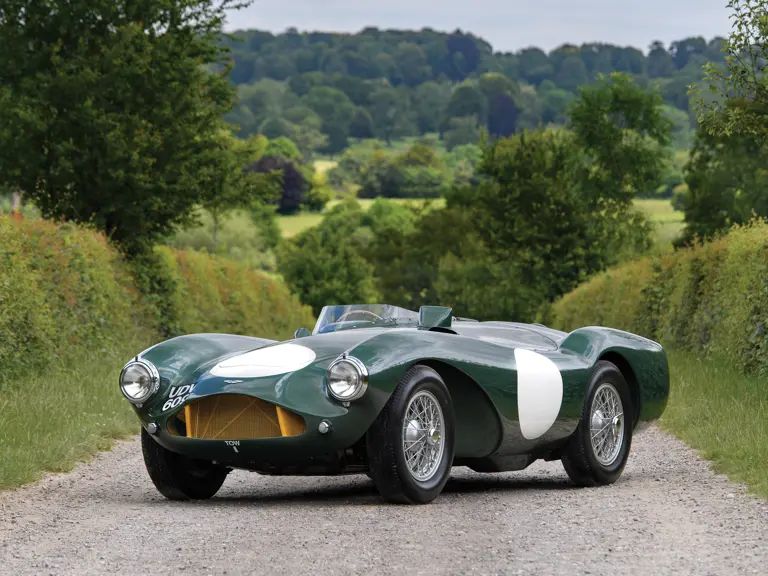
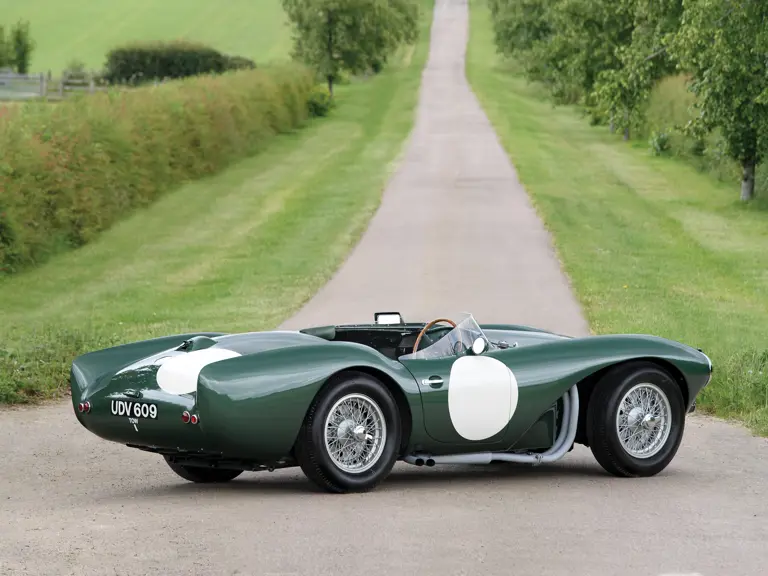
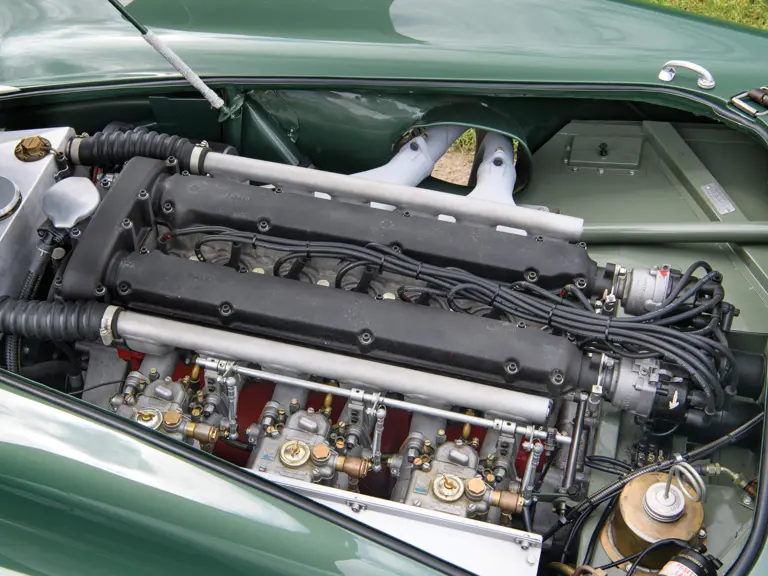
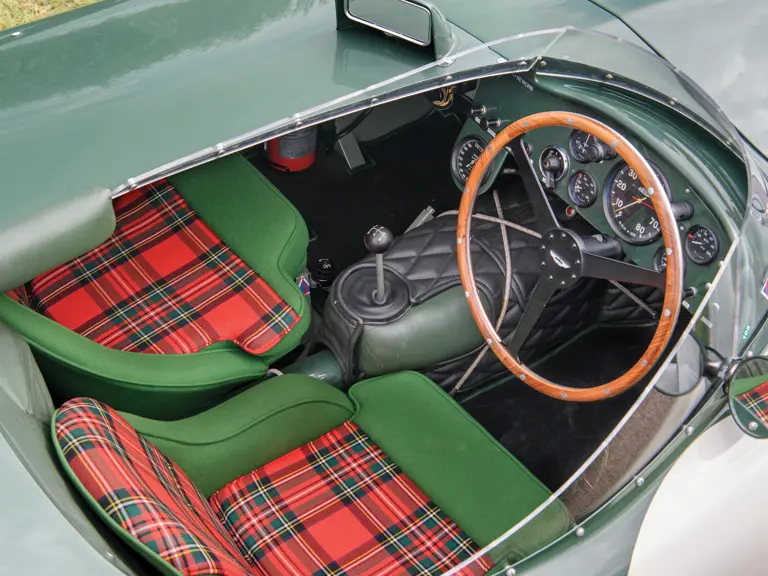

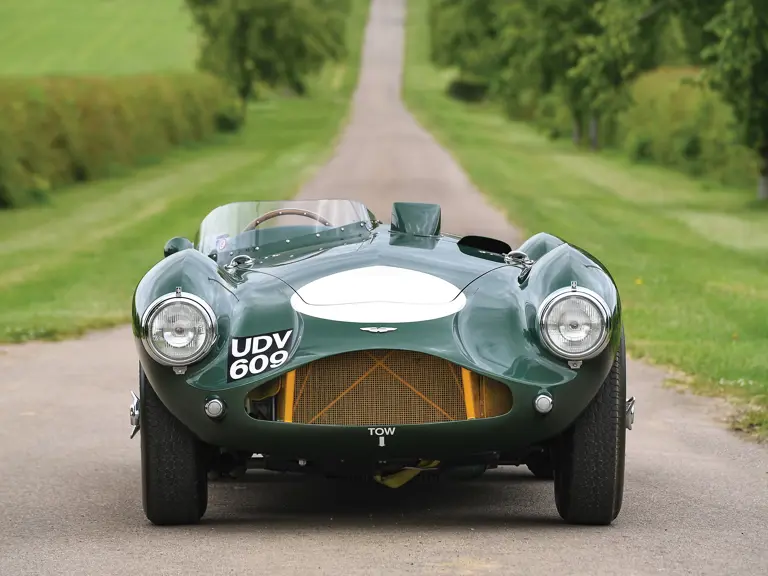


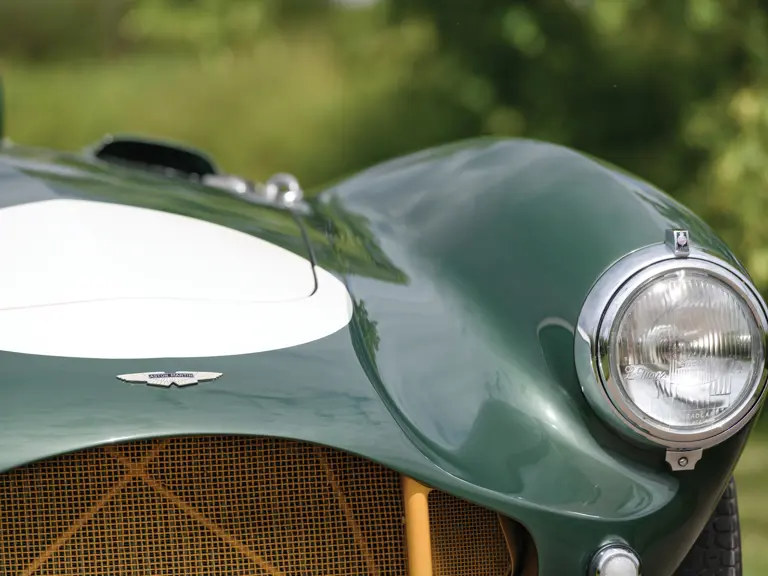



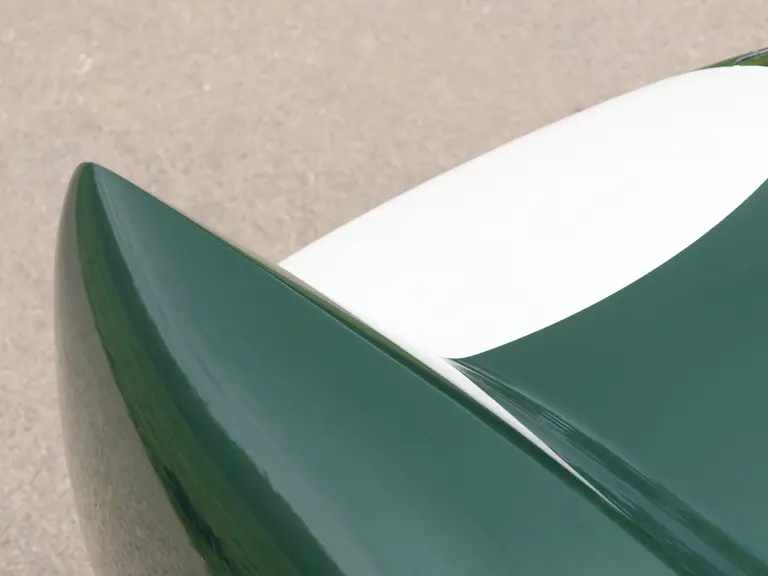
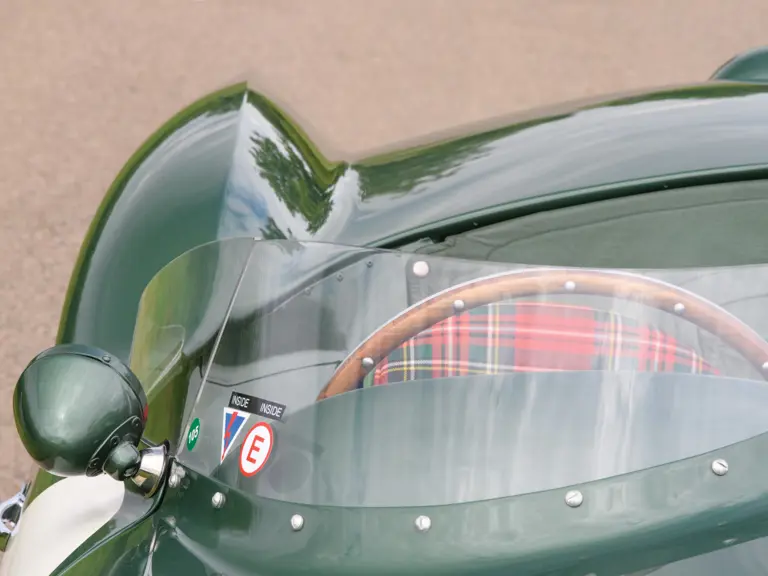
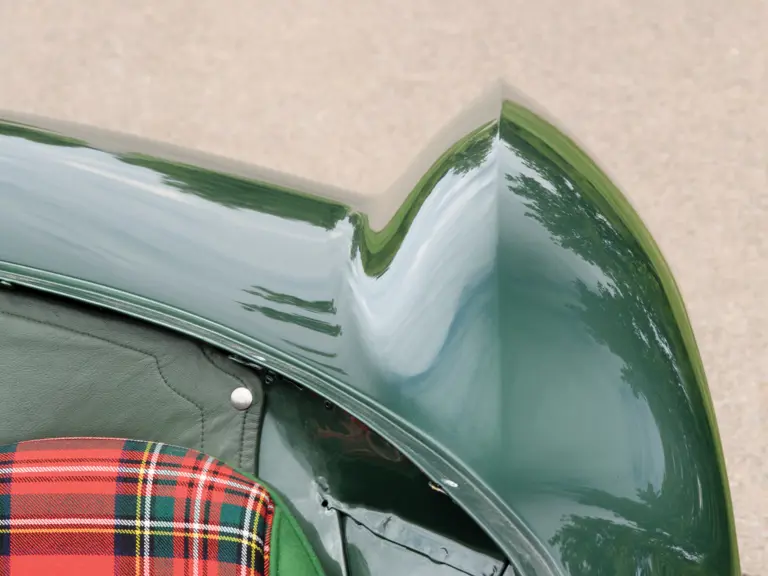
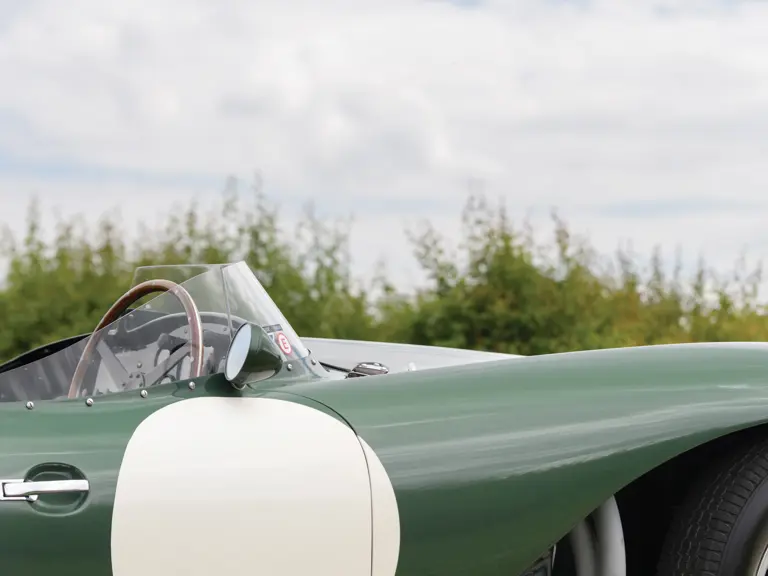
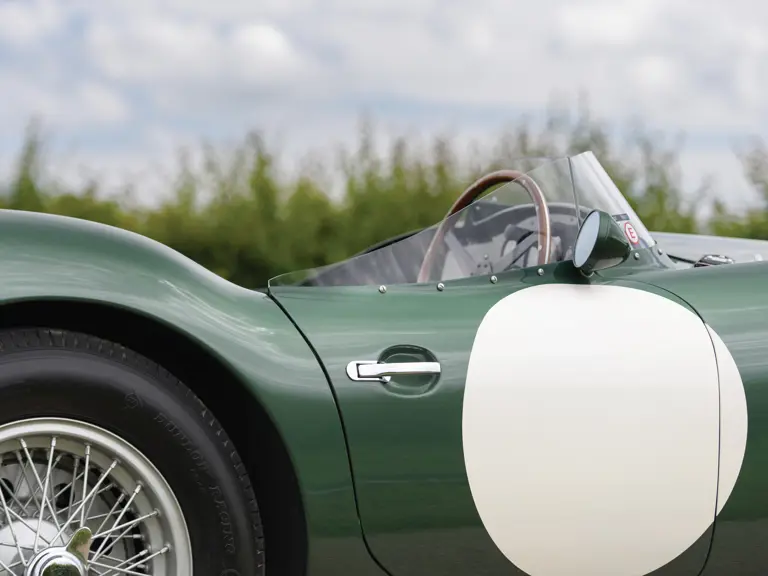

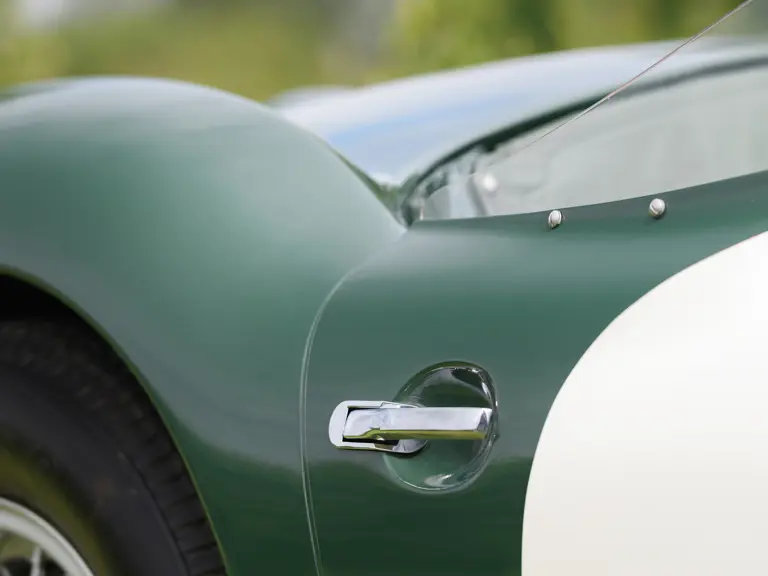
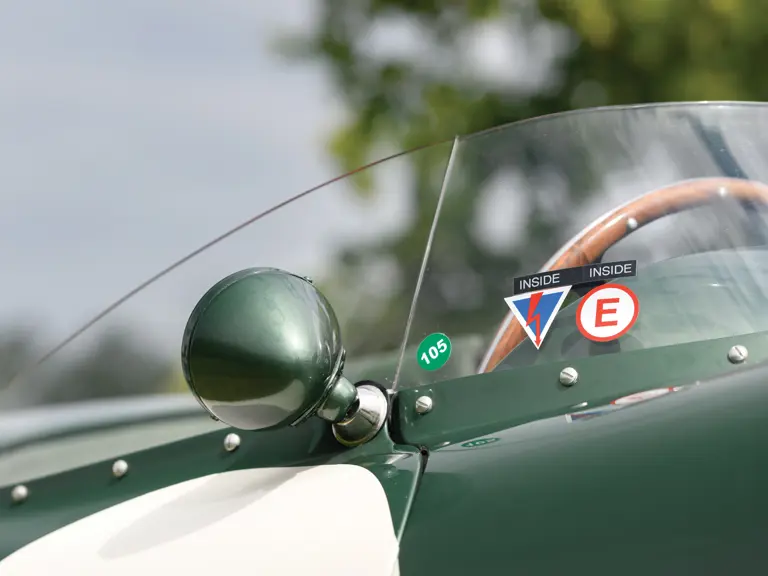
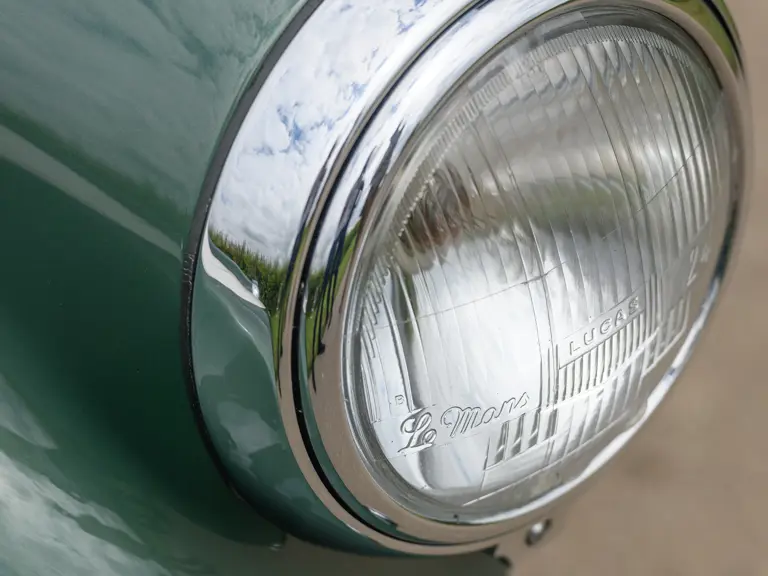
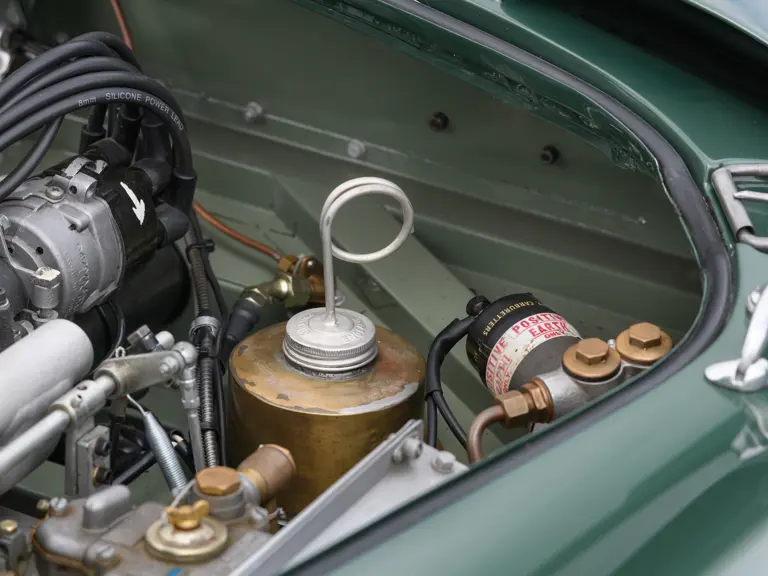
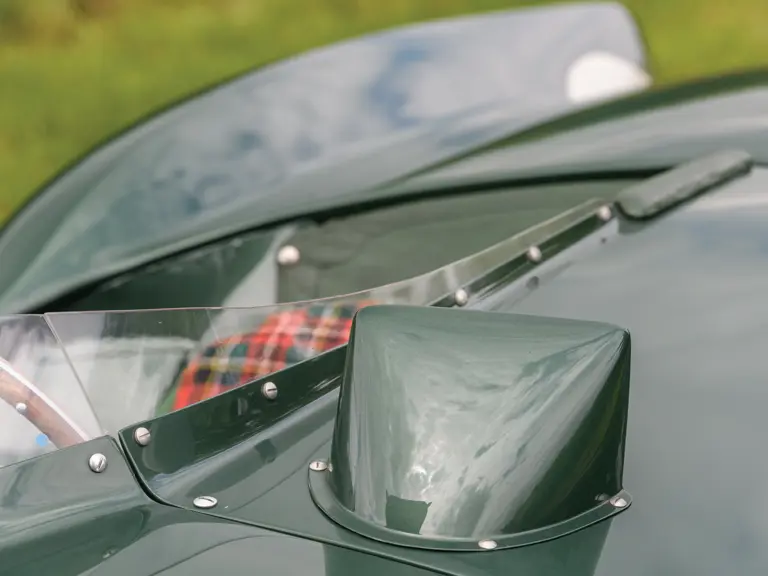

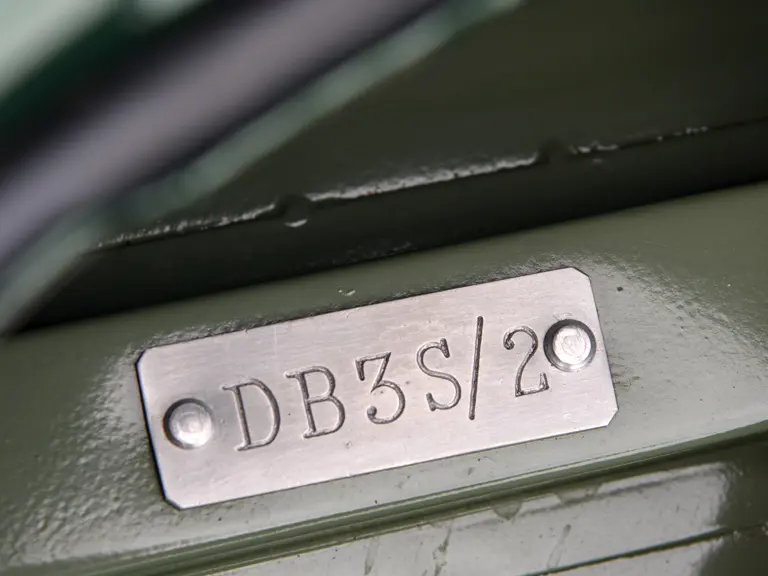
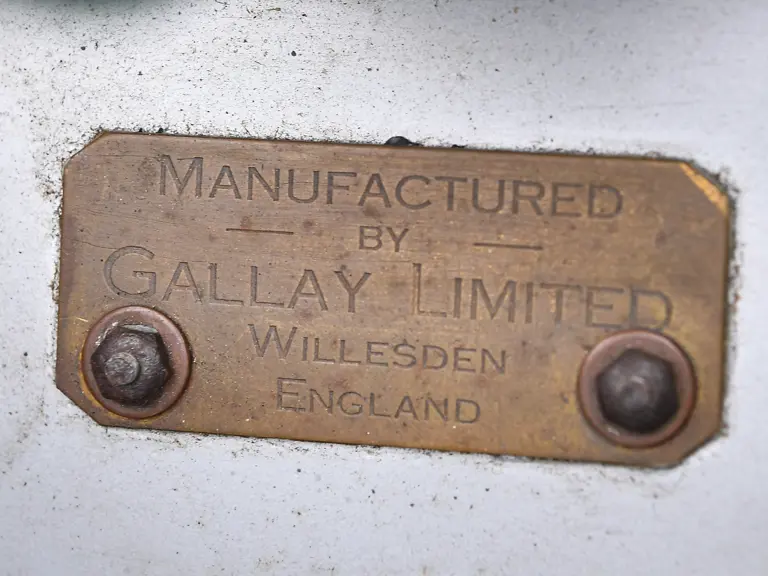

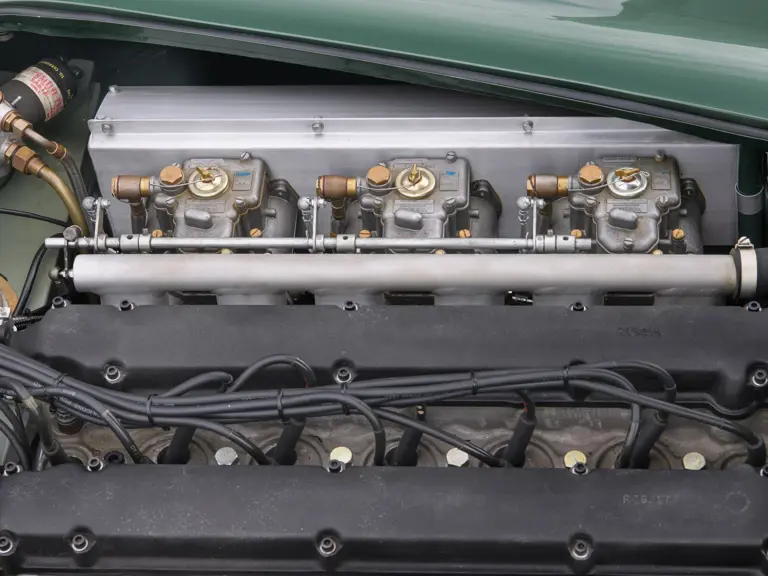
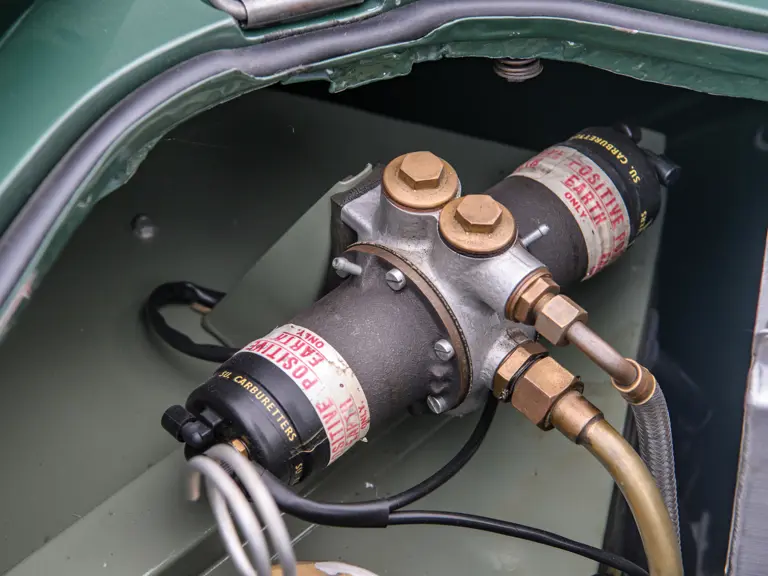
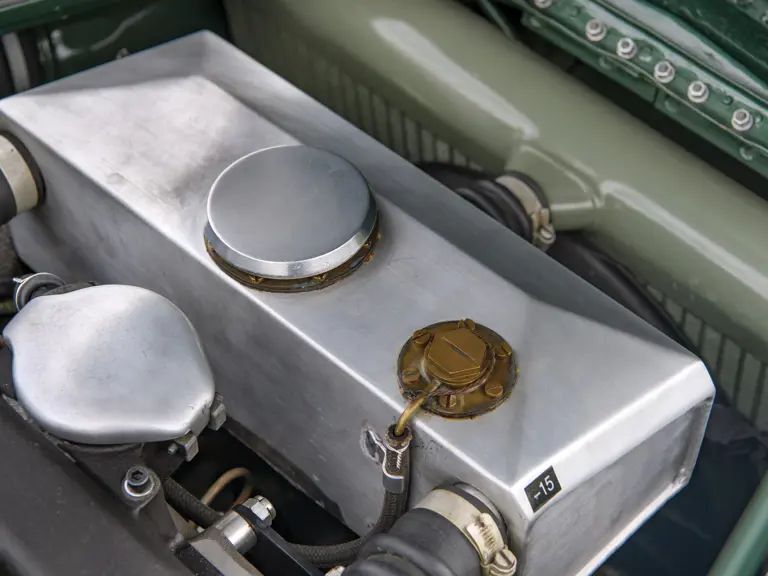


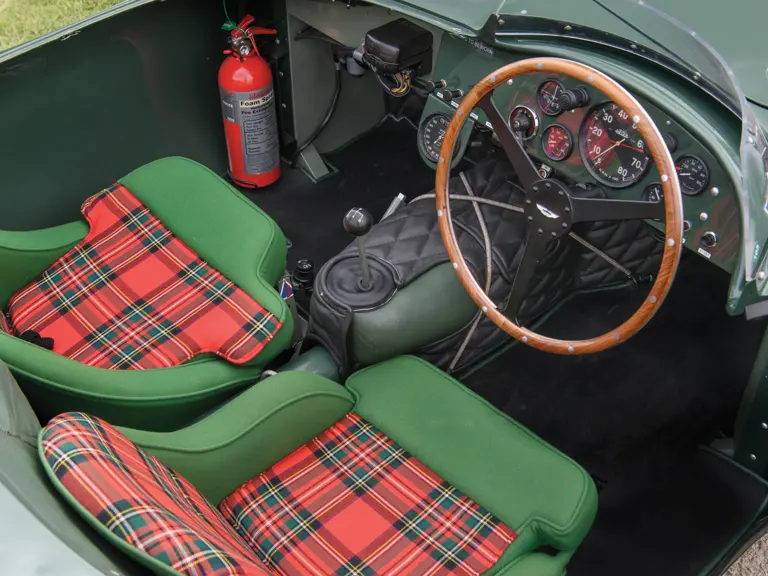
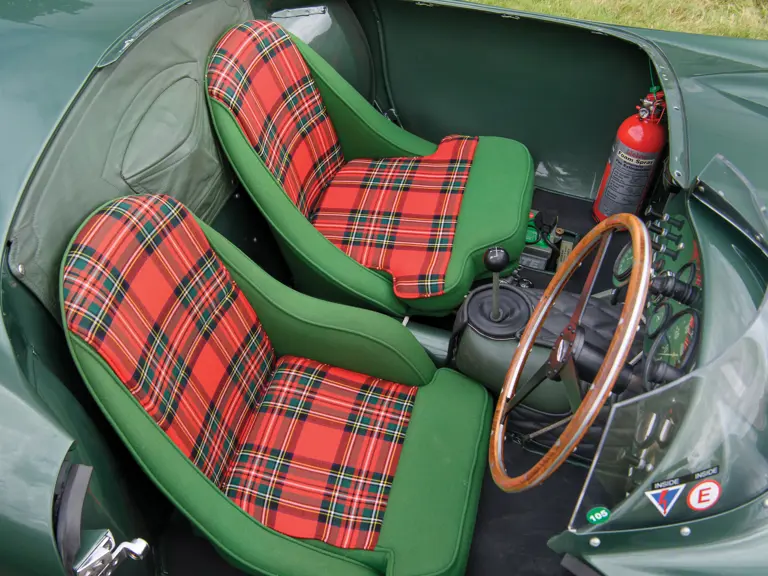

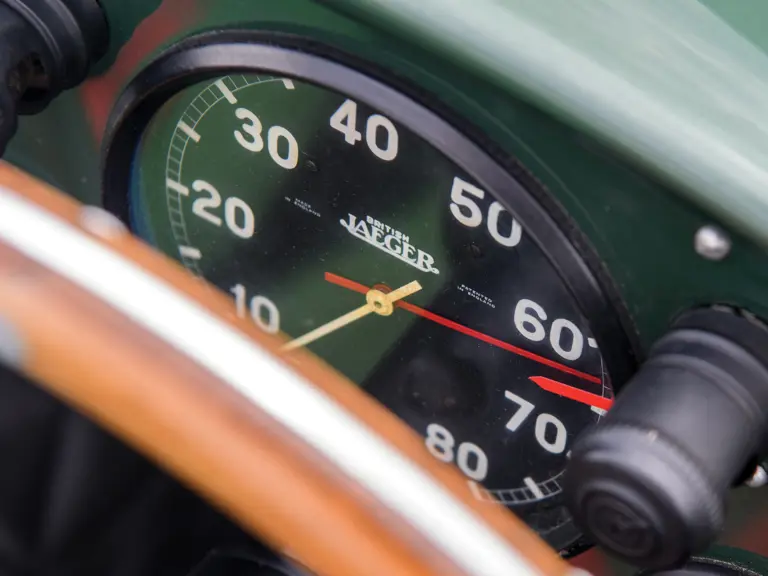
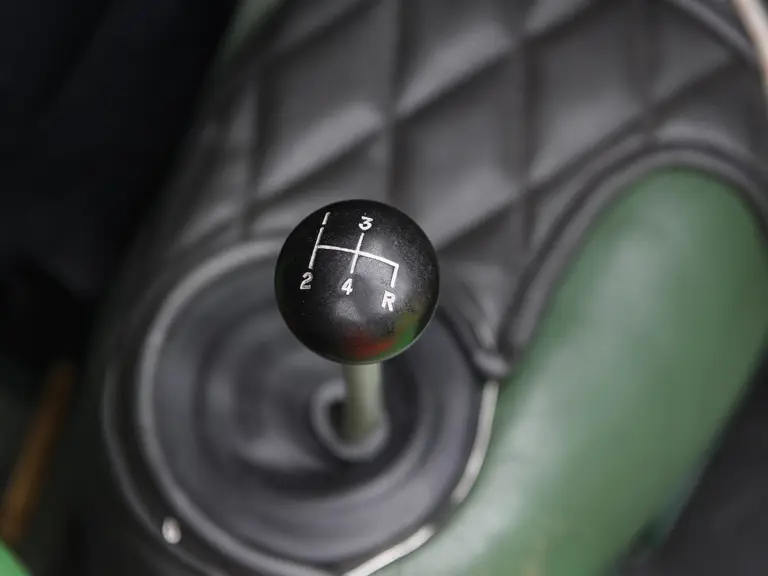
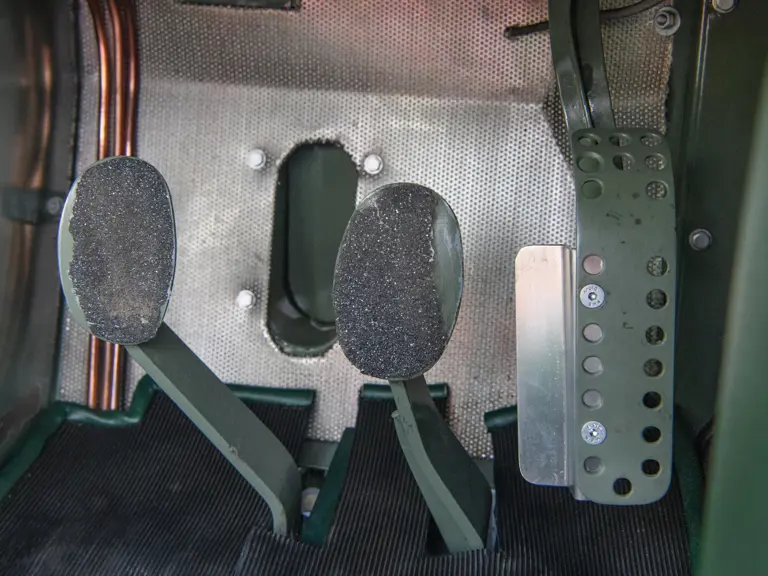
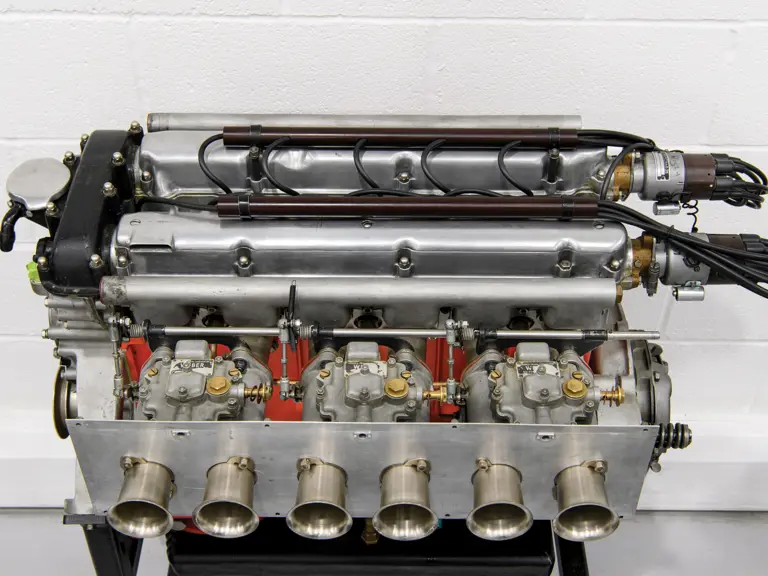
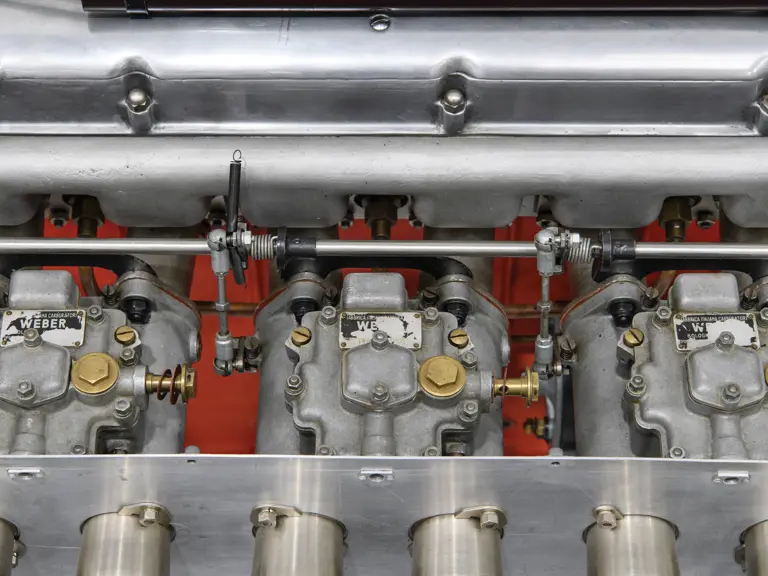
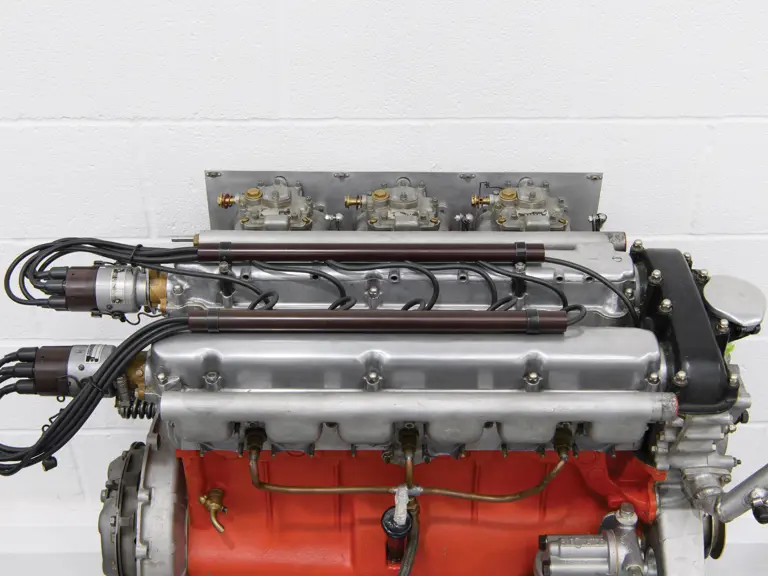
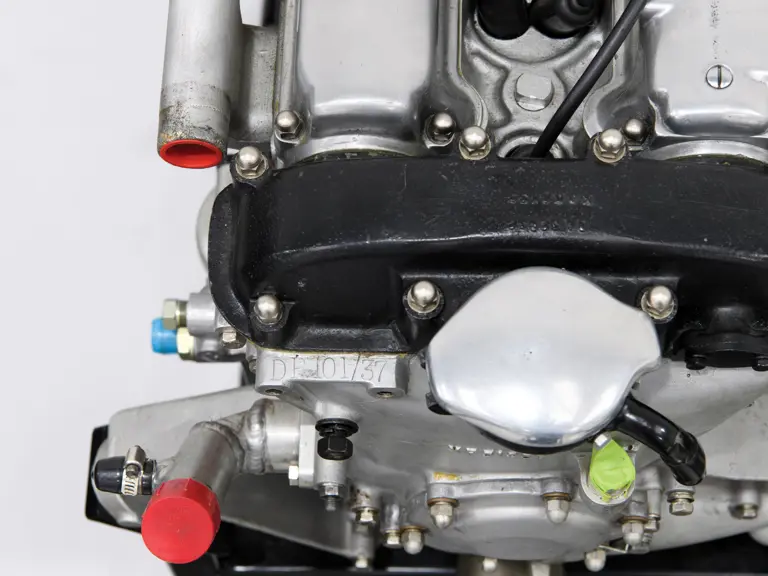

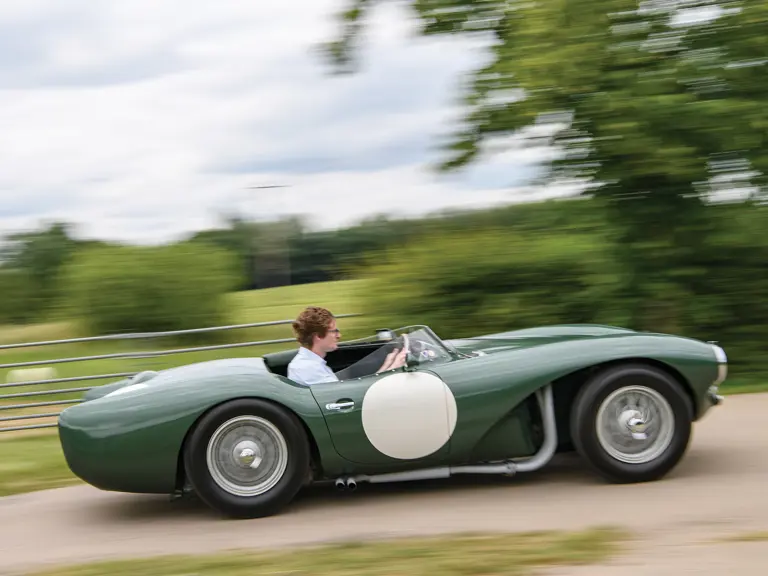


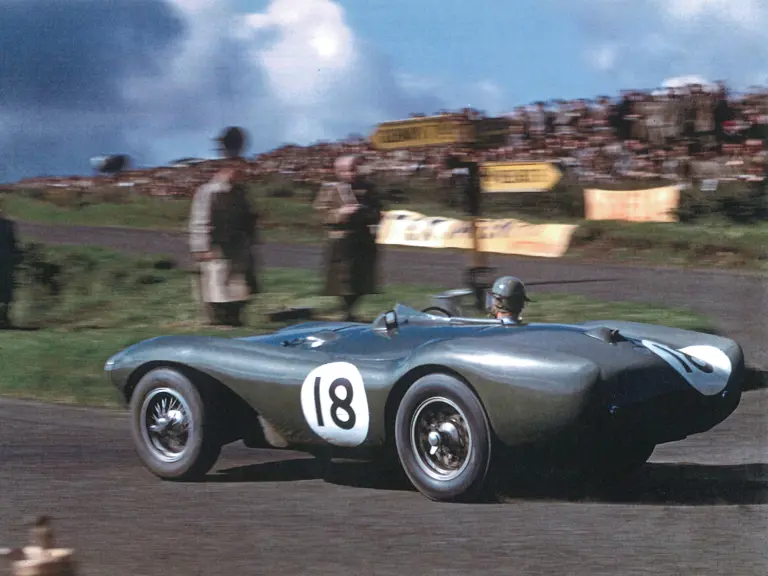
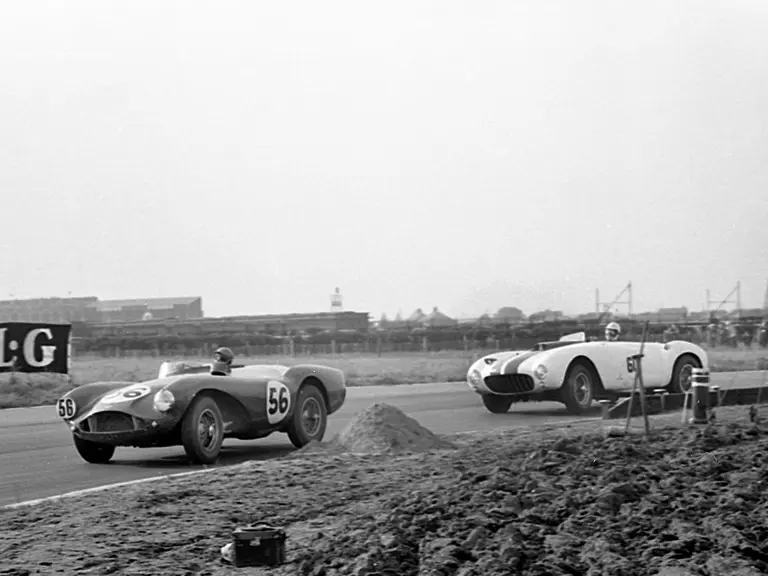

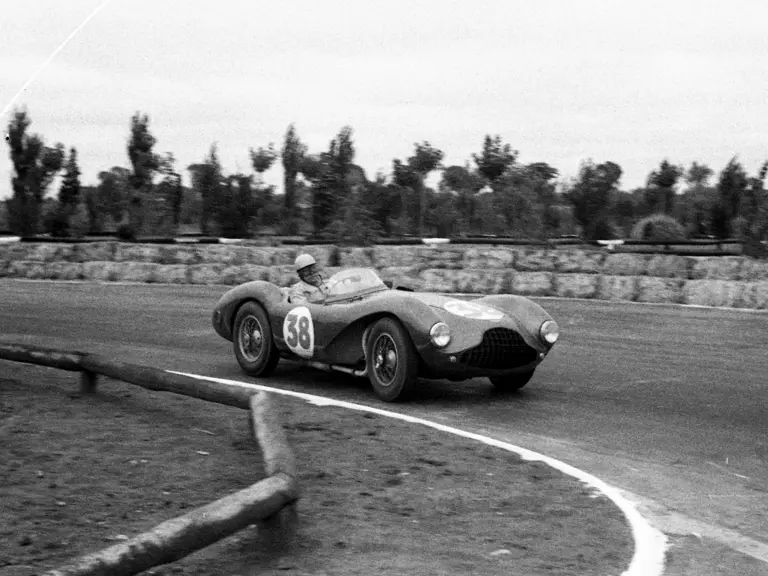
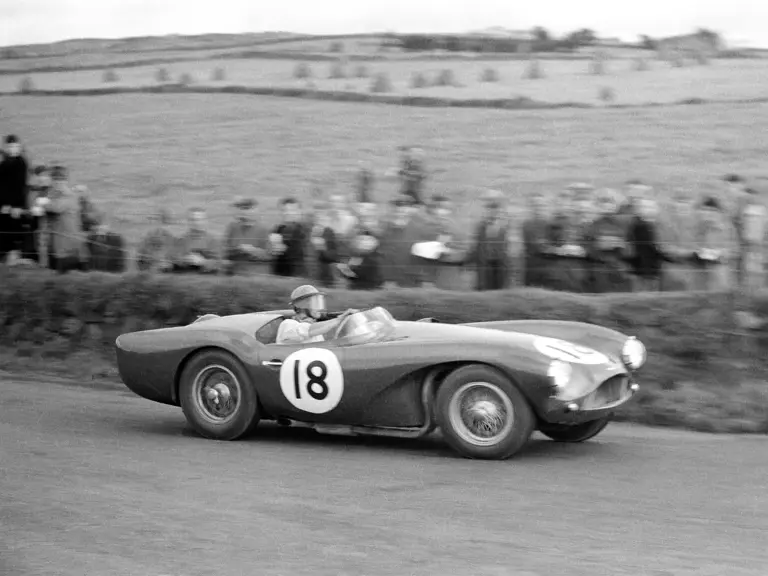
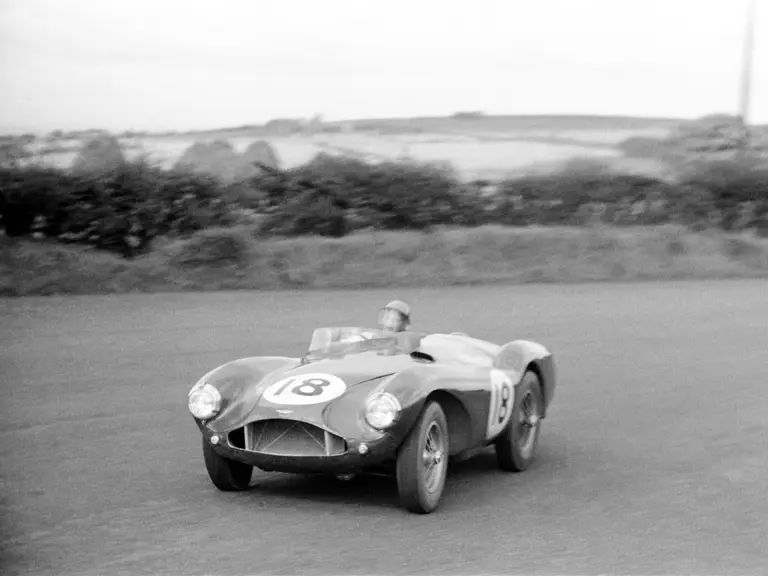
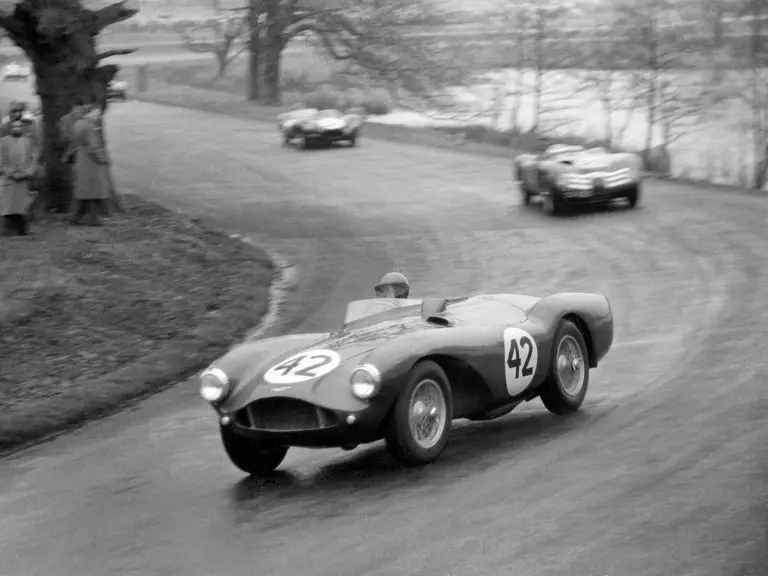

 | Monterey, California
| Monterey, California


